
How to Choose the Right Paintbrush
There are a dizzying variety of brushes out there, each designed to work best with specific types of paint and finishes and for specific projects. Recognizing which brush is right for which job can be confusing. Here’s what you need to know about paintbrushes so you can make the right choice.
Parts of a paintbrush:
- Bristles: Natural hair (best for oil-based paints) or synthetic fibers for all paints.
- Shapes: Flat, square, round or angled.
- Sizes (bristle width): Most range from 1/4-in. (detailing) to 6-in. (exteriors and masonry). Artist brushes can be micro-mini (1/32-in.) for detailing.
- Ferrule (metal piece that holds bristles): Usually made of tin, aluminum, brass or copper alloys.
- Handle: Wood or plastic.
Paintbrush buying tips:
- Choose the best quality brush you can afford.
- Brushes with flagged (split ends) hold paint better.
- Keep a set of all-purpose brushes around the house for odd jobs.
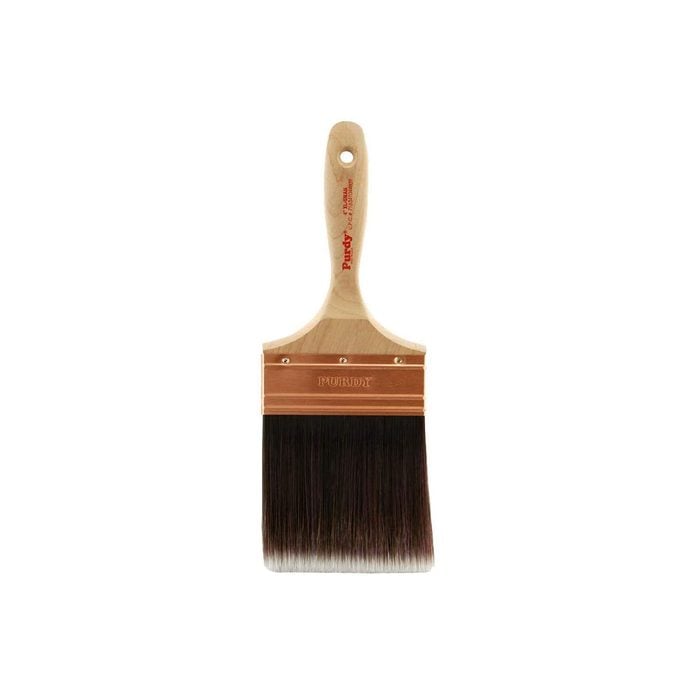
Flat Wall Brush
The most popular style of paintbrush is the classic flat wall brush. It has a square shape with a straight toe (edge of the bristles) to hold lots of product. It’s ideal for applying all types of paints, primers, stains, sealants and even wallpaper paste to large surfaces. You’ll find it nearly everywhere, from your neighborhood hardware store to the supermarket. The flat wall brush is a home-improvement workhorse.

Angled Brush
An angled or sash brush has a slated toe to create clean, sharp lines, making cutting in at the top of walls near the ceiling quicker and easier. This narrow brush performs best for applying enamel paint to trim, moldings, window casings and cabinetry. Sizes range from one inch for reaching confined areas and up to three inches for coating big paneled doors.
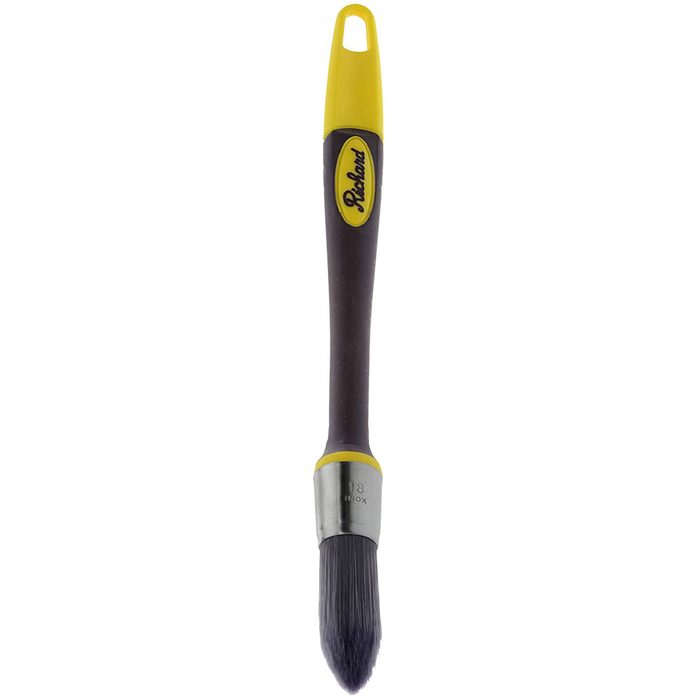
Round Trim Brush
For intricate, precision work, the bristles of a lightweight round trim brush are configured into a long cone, tapered at the end. This shape effectively picks up and puts down paint into sharp corners, cornices and window sashes, so you don’t have to rely so much on painter’s tape to achieve clean lines. A 3/4-in. brush works for most general painting tasks.
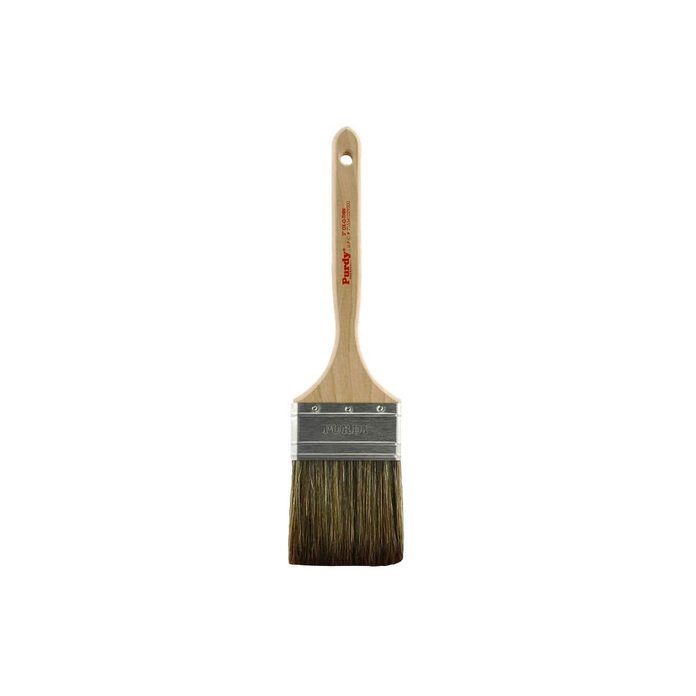
Finishing Brush
To achieve a fine finish on a vintage chest or to clear-coat a cedar deck, several types of brushes can do the job right.
If you’re using oil-borne varnish or shellac, for instance, choose a soft, natural flat-bristle brush when an ultra-smooth finish is desired. For spreading water-based polyurethanes, a good-quality synthetic blend brush releases clear finishes evenly without leaving behind messy brush marks. Use a 1- to 2-in. brush for narrow trim, 2-1/2- to 3-in. for average-size surfaces, and a 4-in. for larger areas like a wall of wood paneling.
Pro Tip: A small finishing brush’s soft bristles are great for dusting off computer keyboards, too.
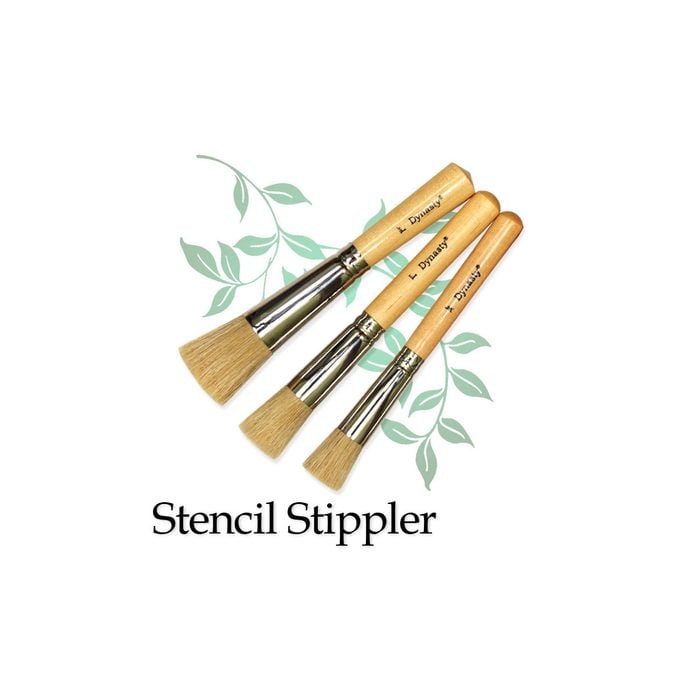
Stencil Brush
A stencil brush is round with short, dense bristles that are flat at the end for stippling (up-and-down pouncing motion) decorative stencil designs on walls and furniture. Providing control to render texture, depth and shading, stencil brushes are available in varying widths. The tiniest (1/4-in.) works for detailed sections and the biggest (1-1/4-in.) for composing over-sized images quickly.
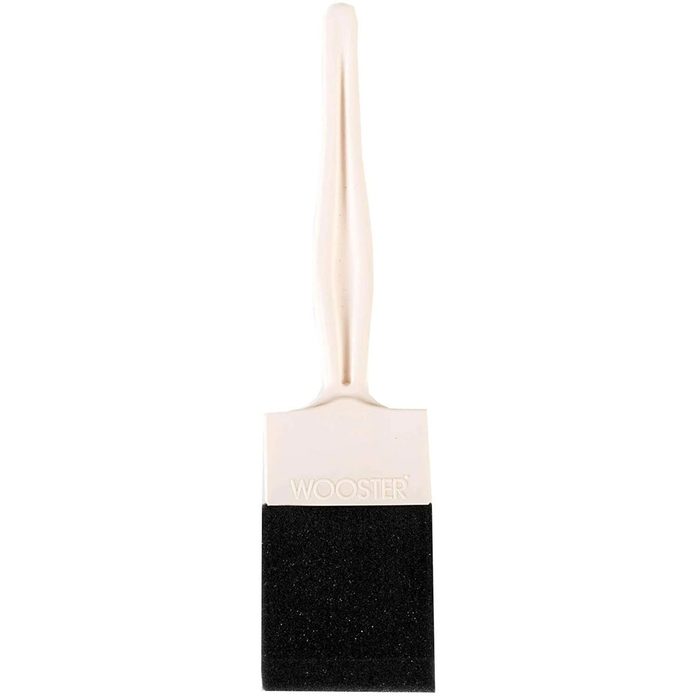
Foam Brush
A foam brush has a blade instead of bristles, usually made of open-cell polyurethane foam, that absorbs and spreads clear coats, varnishes, stains and craft glue. A good choice for small projects, a foam brush is affordable and disposable. The downside: The foam head contains air so it can leave pesky bubbles in the finish.
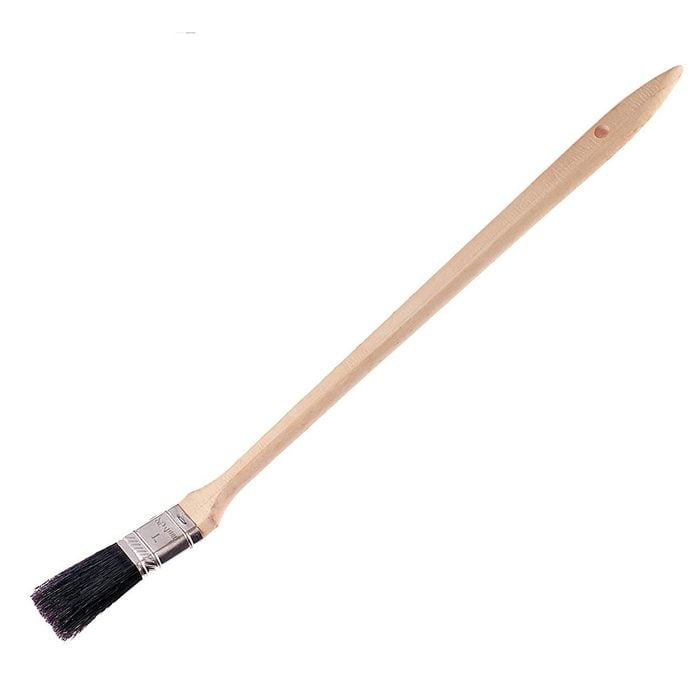
Long Reach Brush
Sometimes called a radiator brush, the long reach brush has an extended handle with a bend at the head. The bend lets you access tight spaces and hard-to-reach areas like behind plumbing, the backs of toilets, appliances and yes, radiators. Perfect for painting high walls and ceilings, it has excellent loading and distribution capacity.
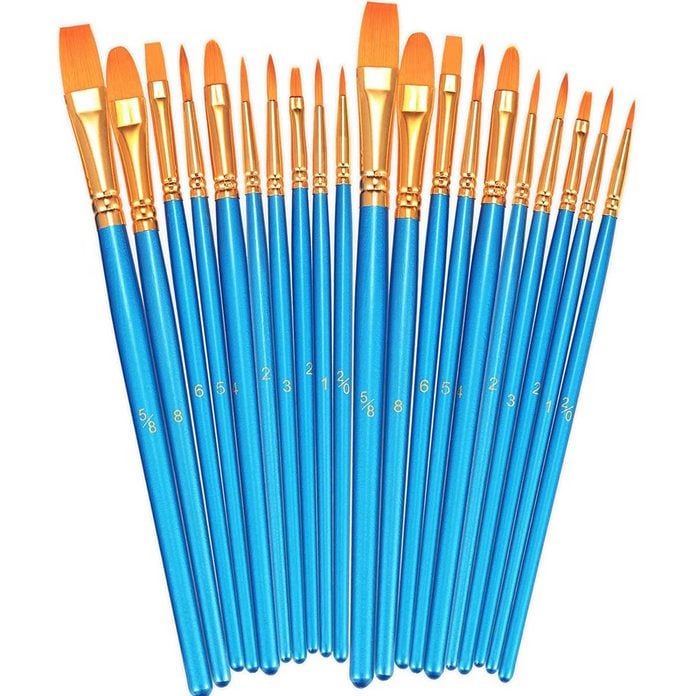
Artist Brush
Artist brushes come in an array of bristle shapes with long thin handles designed for canvas painting, but they can do so much more. From repairing scratches on furniture to filling in damaged faux wood grain, the artist brush is the magic wand of DIYers. We recommend procuring a moderately priced set of brushes in different sizes and shapes to keep around for any repair or hobby projects.
